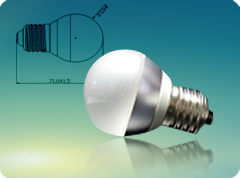The numerous and significant benefits of using modules that incorporate a matrix of LEDs are being recognized by design engineers in several key industry sectors, including aerospace, architectural lighting. Attributes such as design flexibility, low power consumption, and reliable light as well as long lifetime distinguish LED modules from designs based on traditional filament lamps and fluorescent tubes. LEDs can also have knock-on benefits, such as greatly reducing the size and complexity of the module and simplifying the lens design.
LED modules typically comprise a matrix of many surface mount devices. These LEDs are soldered to an etched copper layer that provides the interconnect between the individual LEDs as well as other passive and active components that are required to complete the circuit. The small size of the LEDs and the close proximity with which they can be mounted means that designers have a huge amount of design freedom and can achieve complex lighting patterns with high levels of brightness.
The etched copper circuit is separated from a base plate - usually made of aluminum - by a thermally efficient, electrically isolating dielectric material. The characteristics and capabilities of the dielectric layer are important to the design flexibility and performance of the overall modules.
Product List
- LED Light Bulb
- LED Tube Light
- LED Spot Light
- LED Strip
- LED Down Lights
- LED Bay Lights
- LED Panel Light
- LED Module
- COB LED Light
- Rechargeable LED Lights
- LED Sensor Light
- LED Christmas Lights
- Power Supply
- LED Flood Light
Latest News
- The LED Tube Light Fixture - Answer to Those High Bills
- Installing LED Spotlight Bulb Outdoor to Get Benefits Now
- LED Striplight for Cars-Upgrade the Look of Your Vehicle
- The Best LED Light Bulb Review For Customers
- Four Factors of LED Light Technology Development Trend
- Buy Dimmable LED Light Bulbs Save Your Energy and Money
- The Growth of LED Light Industry India
- LED Streetlight Cost Saving Examination
Contact Us
(86) 372 5081976
sale@chineselight.com
FAQ





